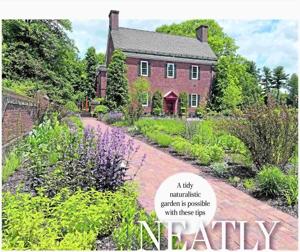Native plants provide food and shelter for bees, butterflies, birds and other beneficial critters. They effortlessly grow healthier and stronger than exotic species, seldom need fertilizers or other amendments, and generally require little or no supplemental water once established. They've grown for hundreds or thousands of years just fine without us, evolving along with native insects, which recognize them as food.
So, why don't more people plant them? I'll tell you one reason why: Unless carefully selected, the plants in a native garden can get messy, a look that some people embrace but others do not. It's one thing if you're growing a meadow, but you might want things neater in a small urban garden or in a suburban community with a homeowners association. But that's on the gardener, not the plants, because it's absolutely possible to have a structured and beautiful native garden.

'Pick the right plant for the right place' This old mantra emphasizes the importance of considering sunlight exposure, water accessibility and soil pH levels when selecting plants. Plant habit — its shape and size — also should be front of mind. Familiarize yourself with the mature sizes of your fledgling plants when deciding where to place them.
Don't, for instance, plant tall natives along a walkway, where they may grow to block access or flop over by midseason, especially after rainfall. Place taller plants and those more likely to lean at the back of a border, with shorter, tighter ones in.
















